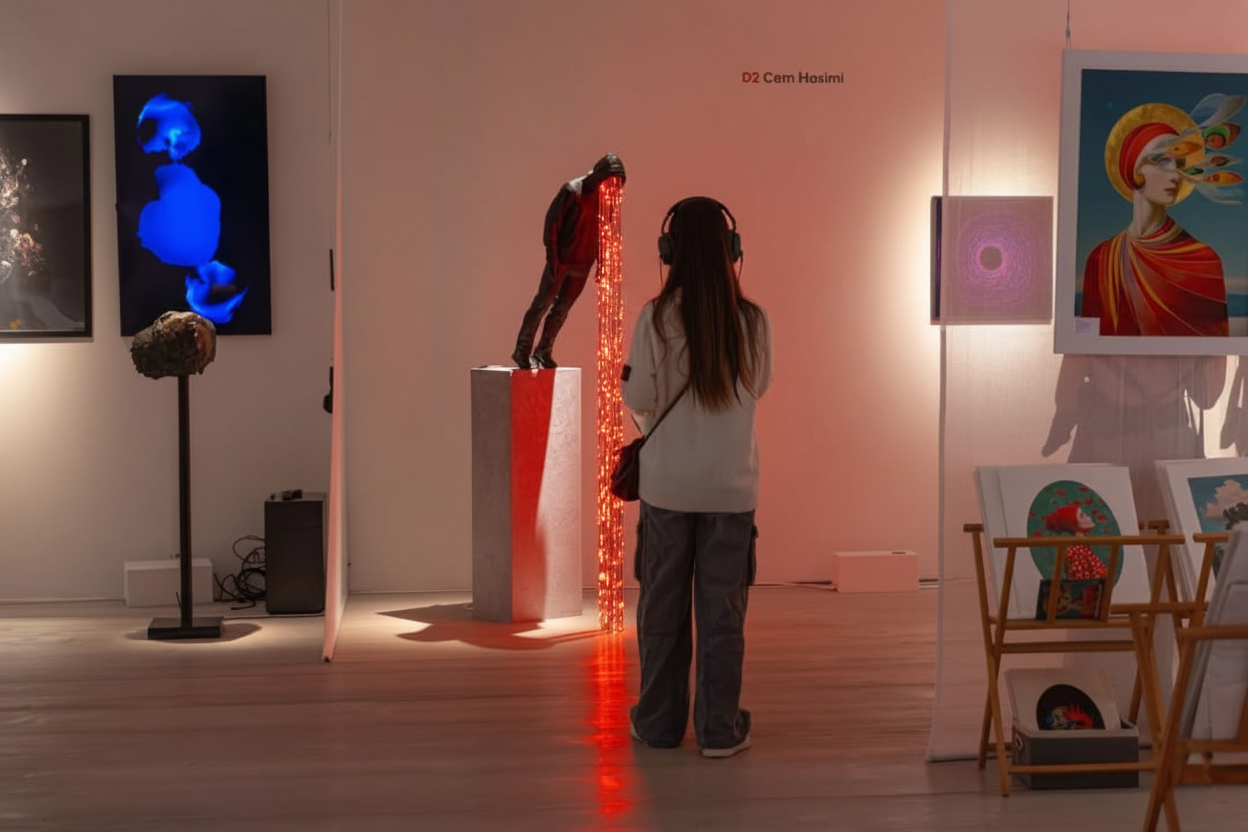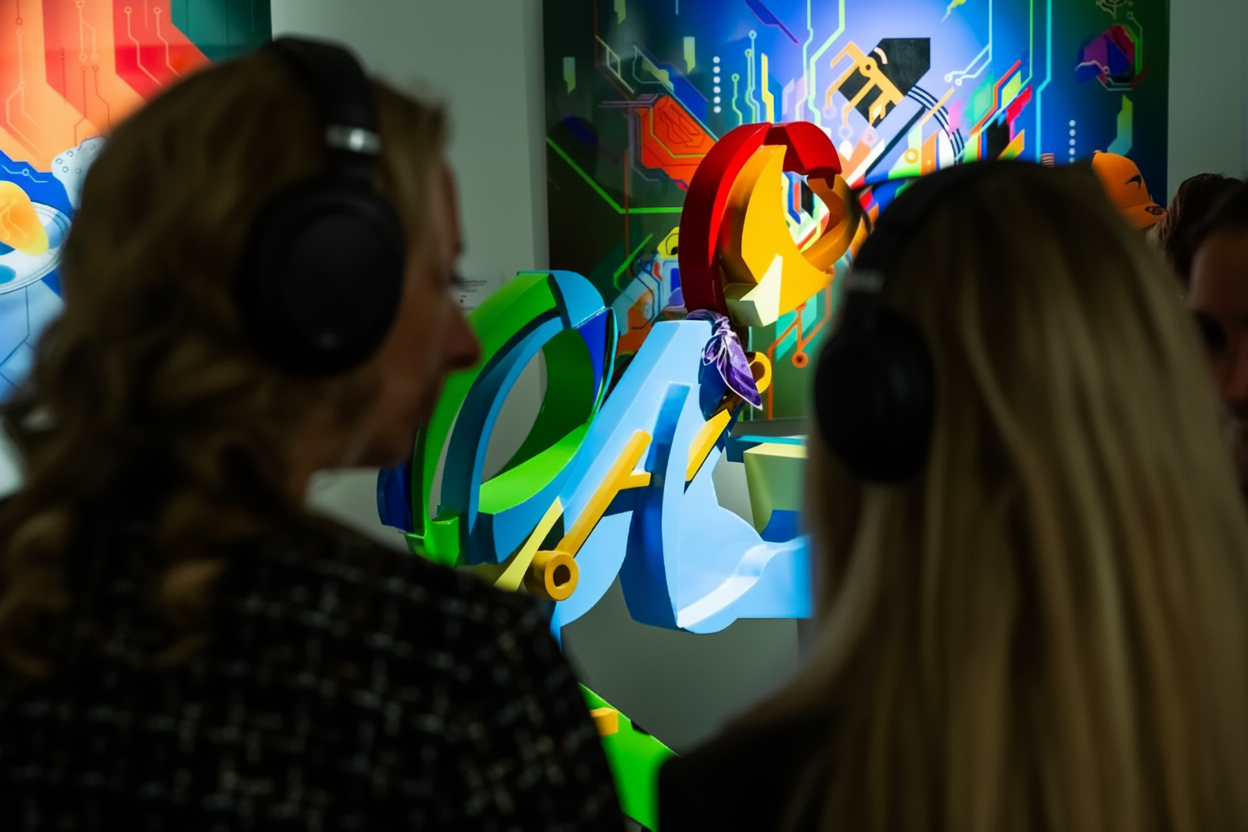DIGITALISM is a pioneering digital art exhibition, part of the British Art Fair at the Saatchi Gallery, London. The featured artworks range from AI, digital painting, sculpture and photography to moving image art, robotic sculpture, Augmented Reality (AR) and Virtual Reality (VR) installations.
The Sound of DIGITALISM
The Challenge
DIGITALISM wanted to elevate its 2025 exhibition beyond visuals by integrating sound as a core part of the immersive experience. The objectives included:
Emotional Engagement: Ensure visitors feel a deeper connection to the digital artworks, transforming passive observation into a multi-sensory journey.
Cohesive Experience: Align music with the exhibition’s narrative arc and the themes of key artworks to create a seamless, evolving visitor journey.
Accessibility: Allow visitors to experience the music without interrupting the artworks or others, while also enabling them to revisit the soundscape outside the gallery, strengthening emotional ties and recall.
Our Approach
We began by researching the core identity of DIGITALISM, uncovering key themes to guide the sonic experience. Working closely with the exhibition curator, Rebekah Tolley, we developed an audio moodboard to define textures, tones, and sounds aligned with the exhibition. We also collaborated with exhibiting artists to uncover music that inspires their work or reflects their pieces.
This research informed the creation of a Sound Playground - a musical framework to guide the curation and complement the exhibition’s key themes, while also providing a foundation for future soundscapes used by the exhibition.
The Solution
We developed a 40-minute curated soundscape that reflected the key themes of DIGITALISM, featuring pioneering artists exploring new technologies in sound. The soundscape was available via QR codes displayed in the gallery, allowing visitors to access the soundscape individually in order to enhance their own personal journey. This also meant that they could re-listen to the soundscape after the event.
This approach ensured that the soundscape was not just background music, but a dynamic, immersive element that enhanced perception, increased their time spent with the artworks, and shaped their emotional experience throughout the exhibition.
Visitors reported a heightened sense of connection to the artworks, turning their experience into a more personal journey. The soundscape allowed them to engage with the exhibition with fewer distractions, making the experience feel intimate and immersive. The curated mix and evolving sound design enhanced the flow and narrative of the space, leaving a lasting impression that extended beyond the gallery.
The Sound of DIGITALISM is a key example of how strategic music curation can transform the way that audiences experience art.



